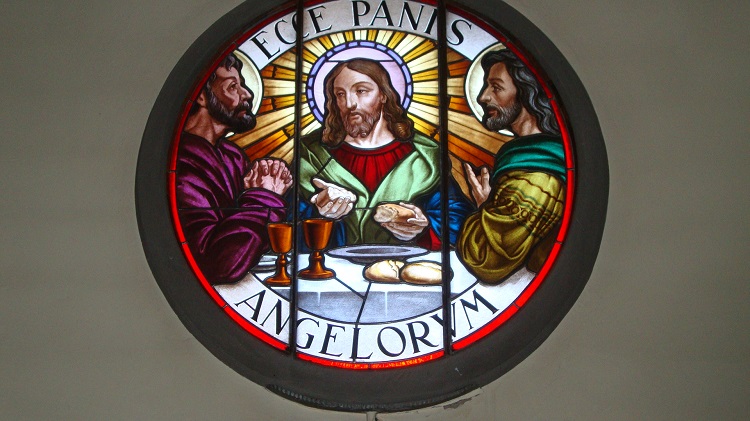Passando in auto (la chiesa è di lato alla carreggiata stradale) è impossibile non vedere la chiesa di Sant’Antonio Abate, parrocchiale nella frazione di Alba, a Canazei. Noi, abbiamo solo quello da fare, ovvero visitare le bellezze della zona e quindi una fermata è d’obbligo.
Passing by car (the church is on the side of the road) it is impossible not to see the church of Sant’Antonio Abate, parish church in the hamlet of Alba, in Canazei. We only have one thing to do, which is to visit the beauties of the area and therefore a stop is a must.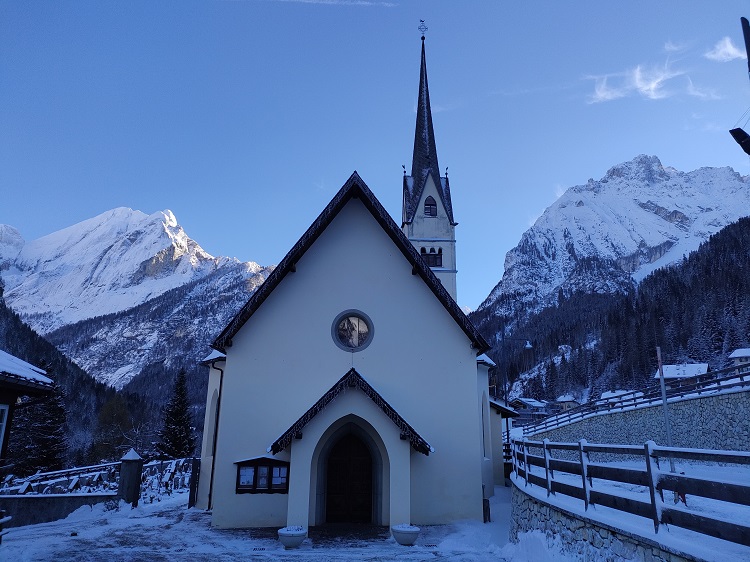
Nel 1410 il principe vescovo di Bressanone, Udalrico di Vienna, concesse a un certo Cristano di Alba il permesso di costruire una piccola cappella intitolata a Sant’Antonio che potesse servire gli abitanti della sua vicinia. Il cantiere si protrasse per alcuni anni, tanto che il 23 ottobre 1414 fra Tommaso, vescovo titolare di Cesarea e suffraganeo vescovo brissinese, concesse quaranta giorni di indulgenza a coloro che avessero contribuito a portare a compimento la costruzione del sacello. La cappella si sviluppava secondo l’odierno orientamento e aveva pianta rettangolare e abside semicircolare. L’edificio può ritenersi concluso entro il 1455, anno in cui è citato in un atto di compravendita che coinvolge il massaro di Sant’Antonio. Contestualmente al tempio fu costruita anche una prima torre campanaria, cui si accedeva direttamente dalla navata, attraverso il portale murato presente sulla parete destra della quarta campata.
In 1410 the prince bishop of Bressanone, Udalric of Vienna, granted permission to a certain Cristano of Alba to build a small chapel dedicated to Sant’Antonio which could serve the inhabitants of his vicinity. The construction site continued for a few years, so much so that on 23 October 1414 Fra Tommaso, titular bishop of Caesarea and suffragan bishop of Brissino, granted forty days of indulgence to those who had contributed to completing the construction of the chapel. The chapel developed according to today’s orientation and had a rectangular plan and semicircular apse. The building can be considered completed by 1455, the year in which it is mentioned in a deed of sale involving the farmer of Sant’Antonio. A first bell tower was also built at the same time as the temple, which was accessed directly from the nave, through the walled portal on the right wall of the fourth bay.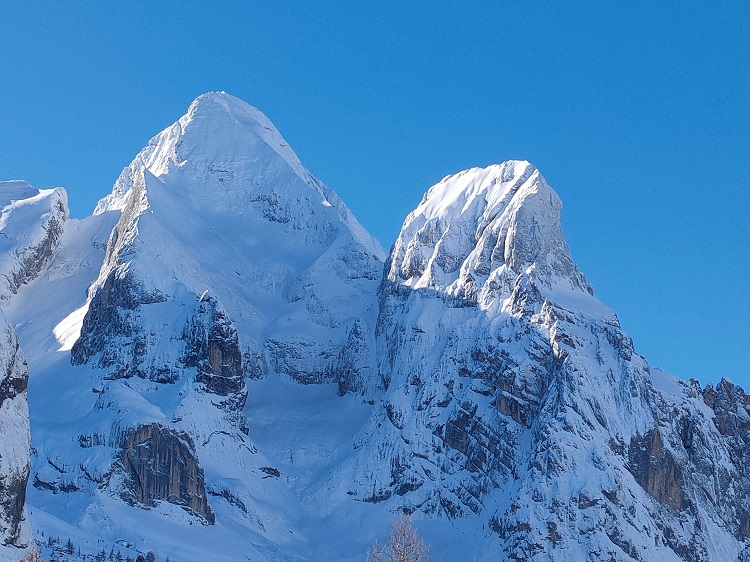
Anche il panorama alle spalle dell’edificio religioso è di tutto riguatdo. Sul lato sinistro una parte del gigantesco Gruppo del Marmolada con il tratto finale del Piccolo Vernel (3092 m.) la forcella del Vernel (3003 m.), il Gran Vernel (3205 m.) con davanti il Sot Vernel (2983 m.), la Roda del Mulon (2882 m.) con davanti il Sass de le Ciaures (2511 m.)
The view behind the religious building is also impressive. On the left side a part of the gigantic Marmolada Group with the final stretch of the Piccolo Vernel (3092 m.), the Vernel saddle (3003 m.), the Gran Vernel (3205 m.) with the Sot Vernel (2983 m.) in front, the Roda del Mulon (2882 m.) with the Sass de le Ciaures (2511 m.) in front
Quasi nulla rimane della primitiva cappella quattrocentesca, che fu totalmente rimaneggiata verso la metà del XVI secolo, quando si procedette al prolungamento e all’ampliamento verso sinistra della navata, nonché alla costruzione dell’attuale presbiterio con abside poligonale.
Almost nothing remains of the original fifteenth-century chapel, which was completely remodeled towards the middle of the sixteenth century, when the nave was extended and enlarged to the left, as well as the construction of the current presbytery with a polygonal apse.
Nel XVI secolo l’edificio venne ampliato con un allungamento ed allargamento della navata, inoltre vennero costruiti il nuovo presbiterio e furono sistemate le volte. Dopo l’ampliamento gli interni vennero affrescati e molti di questi lavori in seguito vennero imbiancati.
In the 16th century the building was enlarged with an extension and widening of the nave, furthermore the new presbytery was built and the vaults were arranged. After the expansion the interiors were frescoed and many of these works were later whitewashed.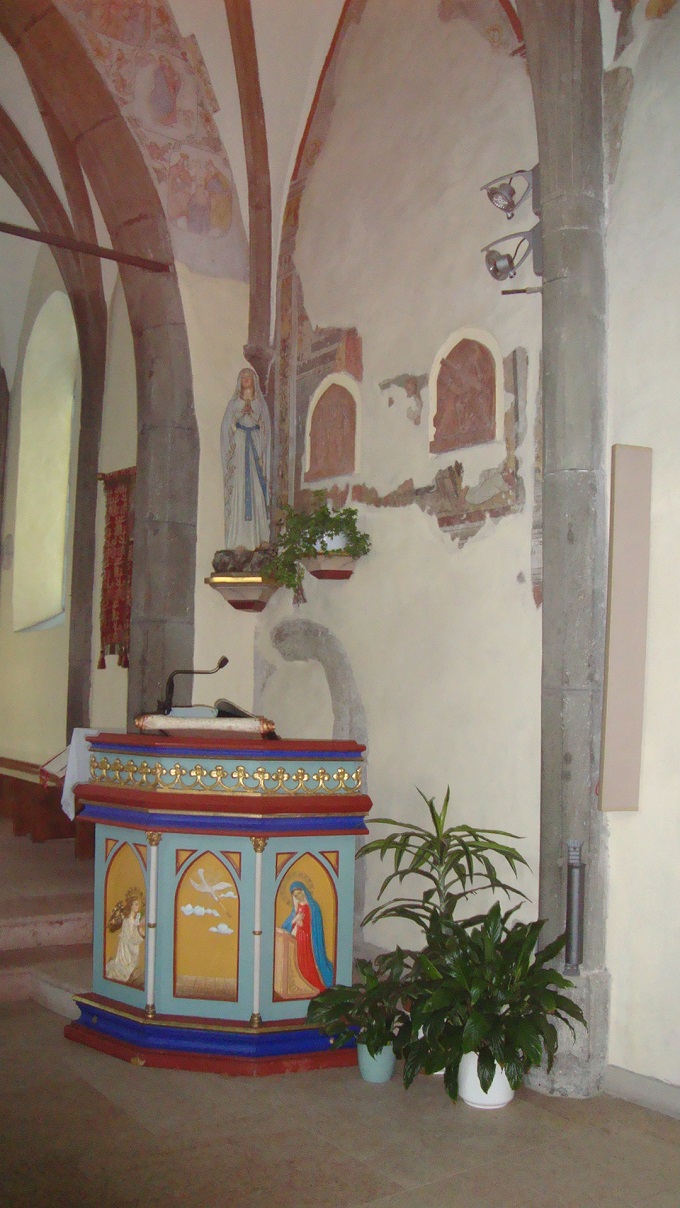
La consacrazione, officiata dal vescovo ausiliario Biagio Aliprandini da Livo di Bressanone, venne celebrata nel 1561. Ottenne dignità curiaziale nel 1692.
The consecration, officiated by the auxiliary bishop Biagio Aliprandini from Livo di Bressanone, was celebrated in 1561. He obtained curiatial dignity in 1692.
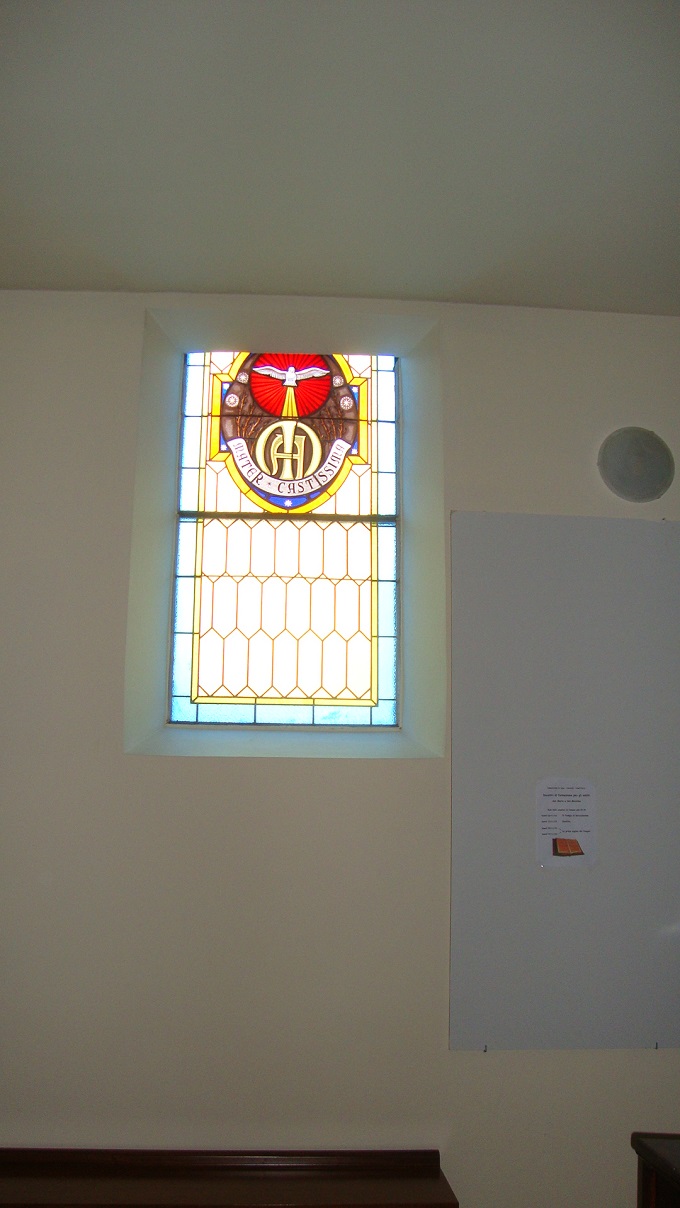
All’inizio del XIX secolo venne ampliata, con la realizzazione di una nuova facciata. Fu sostituita anche la pavimentazione della sala.
At the beginning of the 19th century it was enlarged, with the construction of a new façade. The flooring of the room was also replaced.
Nel 1818 la chiesa passò dalla diocesi di Bressanone a quella di Trento e, nel 1856 venne ristrutturata la torre campanaria. Il secolo si concluse col rifacimento del tetto.
In 1818 the church passed from the diocese of Bressanone to that of Trento and, in 1856 the bell tower was renovated. The century ended with the rebuilding of the roof.
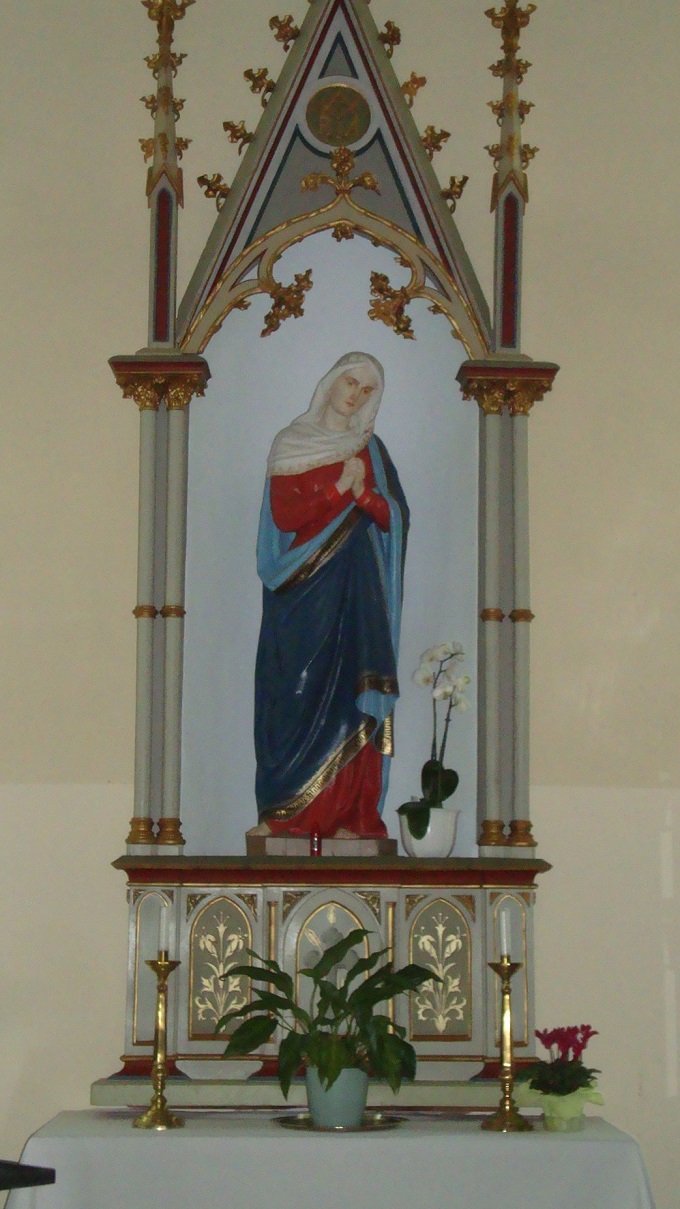
Nel XX secolo gli interni vennero decorati e, in seguito, queste opere pittoriche vennero imbiancate.
In the 20th century the interiors were decorated and, later, these pictorial works were whitewashed.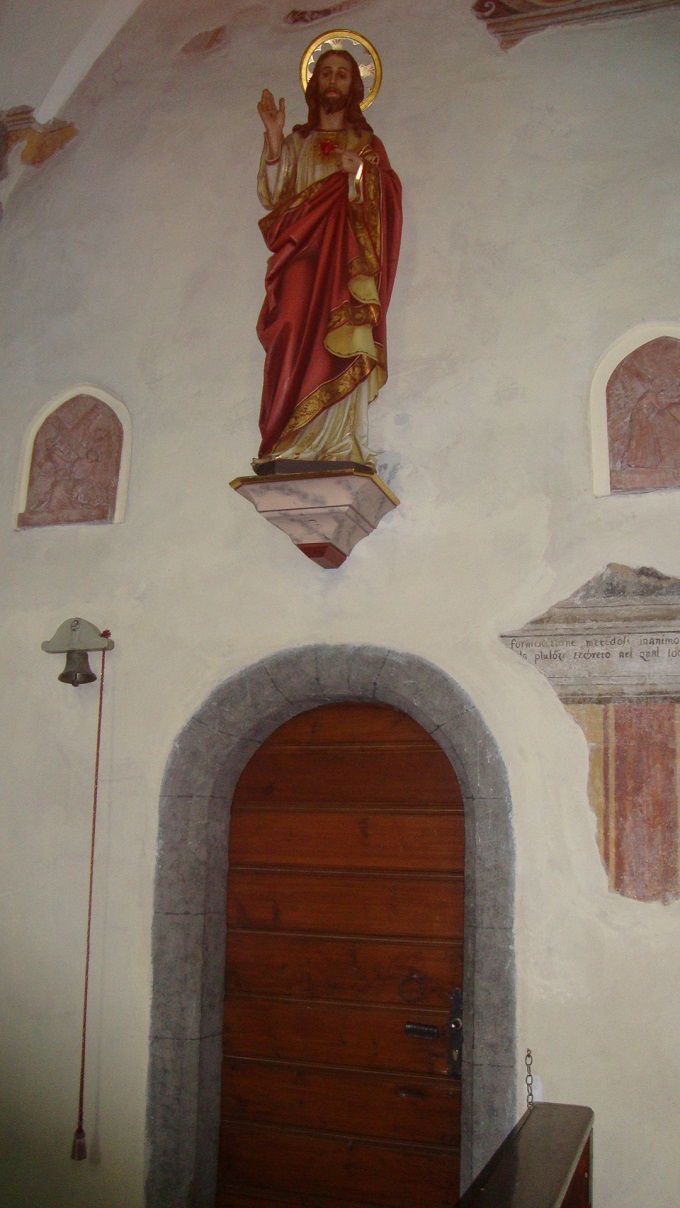
Dopo la fine del primo conflitto mondiale, nel 1919, venne istituita la parrocchia ad Alba di Canazei, con dedicazione a Sant’Antonio abate.
After the end of the First World War, in 1919, the parish was established in Alba di Canazei, with dedication to Saint Anthony the Abbot.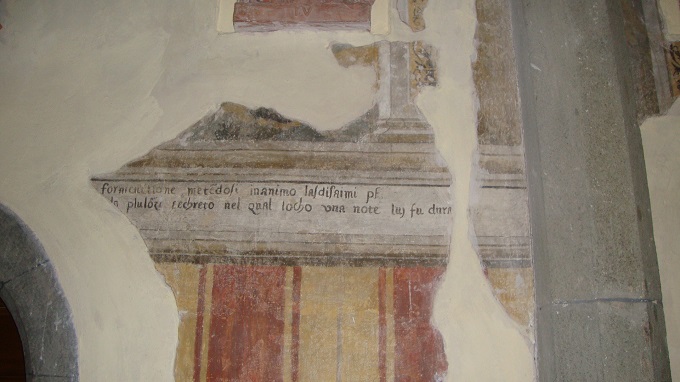
Nel secondo dopoguerra l’edificio venne riparato dai danni subiti durante le incursioni dell’aviazione alleata e la navata venne ulteriormente allungata, con l’erezione di un nuovo prospetto.
After the Second World War, the building was repaired from the damage suffered during the Allied air raids and the nave was further lengthened, with the erection of a new façade.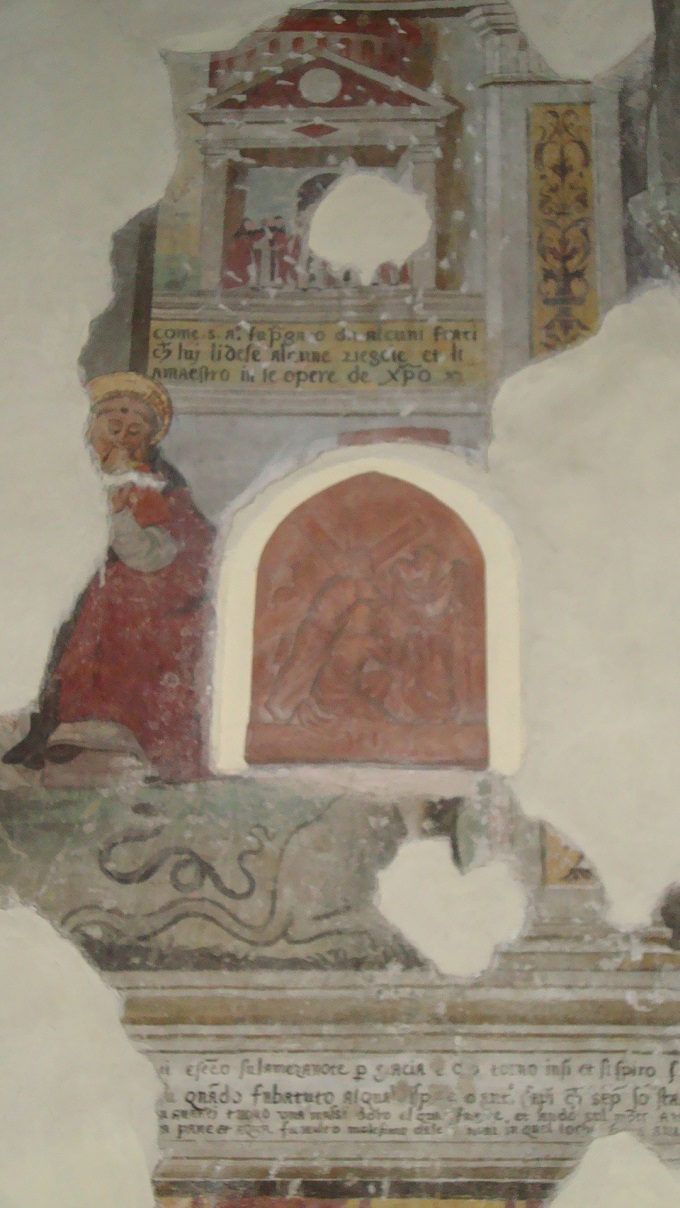
A partire dalla seconda metà del secolo vennero realizzati vari interventi che portarono a migliorie ed adeguamenti.
Starting from the second half of the century, various interventions were carried out which led to improvements and adjustments.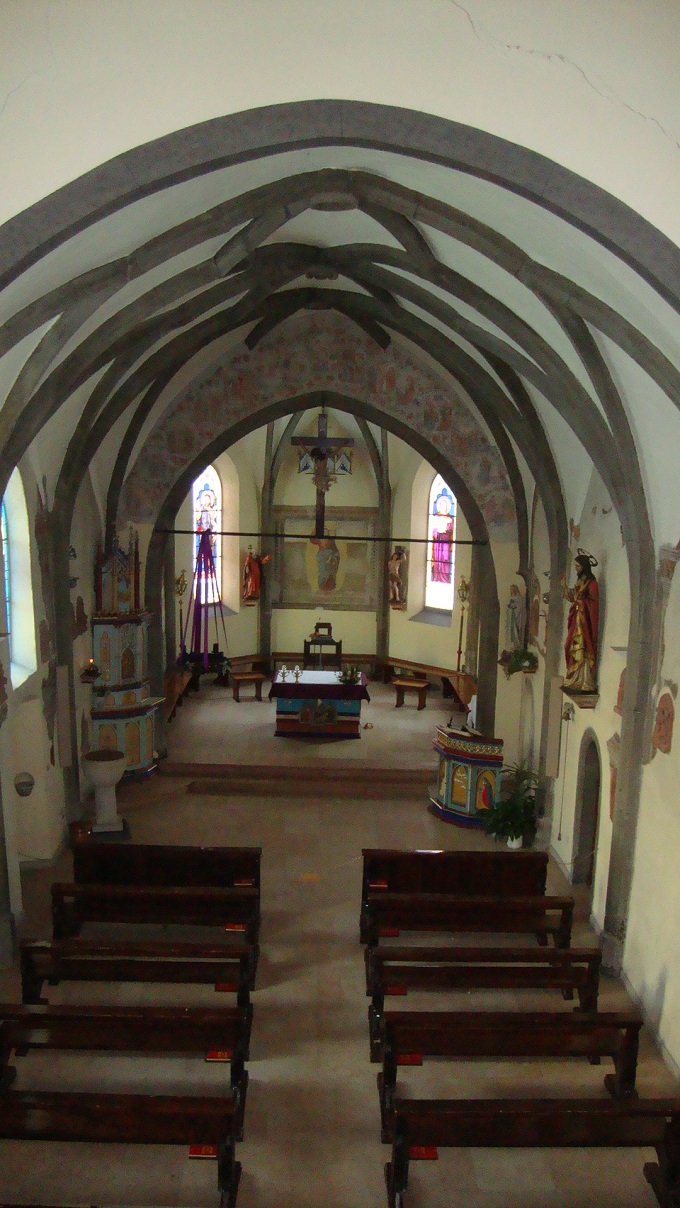
L’interno si sviluppa su navata unica, ripartita in quattro campate da esili semicolonne in sienite dei Monzoni, alle quali si raccordano le nervature della volta reticolata. L’ampio presbiterio a due campate, rialzato su due gradini, è introdotto dall’arco santo a sesto acuto in pietra e si conclude in un’abside poligonale. Nella prima campata del coro restano le figure di tre apostoli, probabilmente attorno era raffigurato il resto di un ciclo di apostoli. Le pareti della navata sono decorate con scene della vita di S. Antonio abate.
The interior develops on a single nave, divided into four bays by slender semi-columns in Monzoni syenite, to which the ribs of the reticulated vault are connected. The large presbytery with two bays, raised on two steps, is introduced by the pointed stone holy arch and ends in a polygonal apse. In the first bay of the choir the figures of three apostles remain, probably the rest of a cycle of apostles was depicted around it. The walls of the nave are decorated with scenes from the life of St. Anthony the Abbot.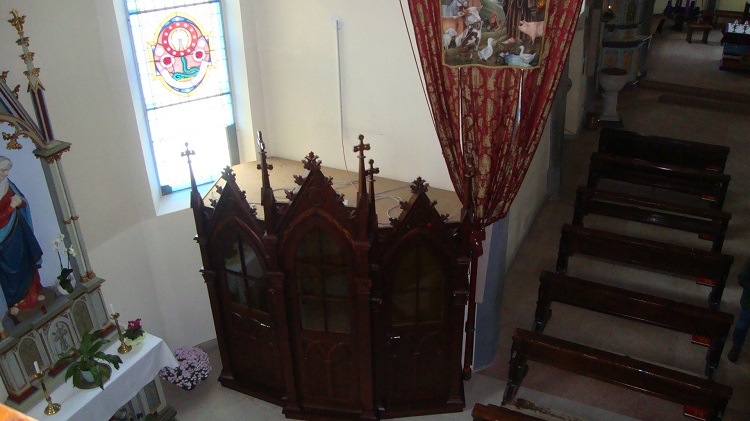
L’ultimo restauro conservativo si è realizzato nel 1992. La fabbrica presenta fiancate simmetriche, caratterizzate dall’emergere dei corpi delle cappelle laterali e ritmate dalle aperture delle monofore archiacute, disposte in corrispondenza di ogni campata e nei lati obliqui delle cappelle e dell’abside.
The last conservative restoration was carried out in 1992. The building has symmetrical sides, characterized by the emergence of the bodies of the side chapels and punctuated by the openings of the pointed single-lancet windows, arranged in correspondence with each bay and on the oblique sides of the chapels and the apse.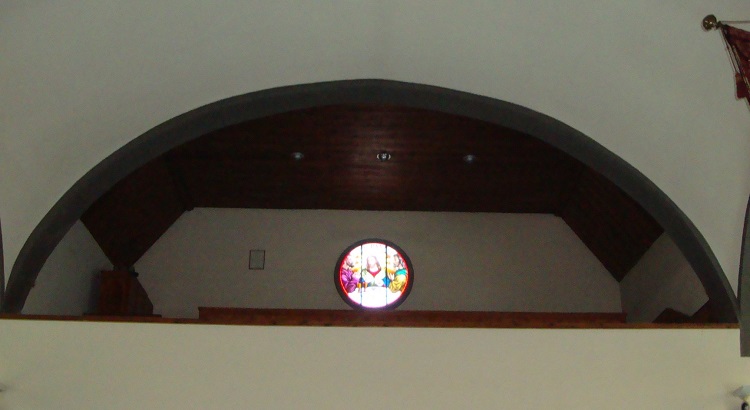
Ai lavori condotti all’indomani della seconda guerra mondiale (1947-1948) si deve l’ulteriore prolungamento della navata con la costruzione della prima campata con cappelle laterali e la realizzazione dell’attuale facciata monocuspidale, con portale archiacuto protetto da un portico a due spioventi e sormontato da un oculo circolare.
The works carried out in the aftermath of the Second World War (1947-1948) were responsible for the further extension of the nave with the construction of the first span with side chapels and the construction of the current single-cusped façade, with an arched portal protected by a double portico. sloping and surmounted by a circular oculus.
A partire dalla seconda metà del secolo vennero realizzati vari interventi che portarono a migliorie ed adeguamenti, come l’installazione di un nuovo impianto di riscaldamento, la sostituzione della pavimentazione, la revisione degli intonaci, la tinteggiatura ed il rifacimento del tetto.
Starting from the second half of the century, various interventions were carried out which led to improvements and adjustments, such as the installation of a new heating system, the replacement of the flooring, the revision of the plaster, the painting and the re-roofing.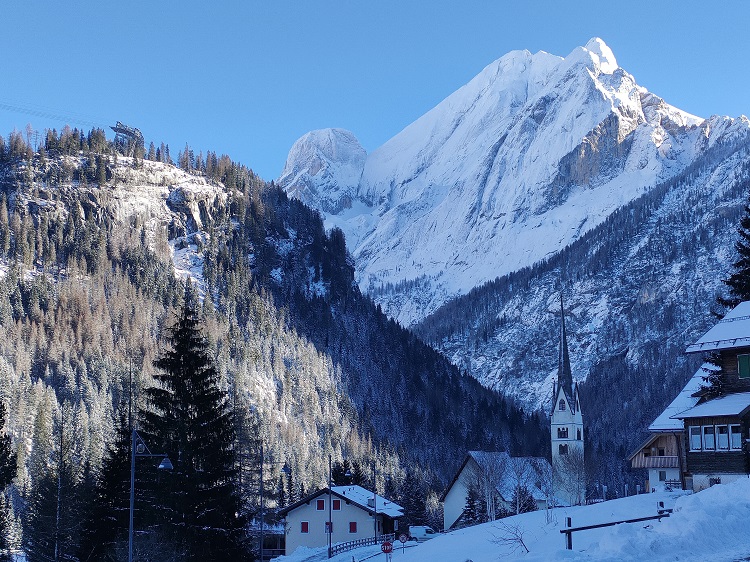
Allontanandoci, notiamo che sul lato destro sorge la torre campanaria, con cella illuminata da due ordini di bifore e trifore, conclusa da una copertura a losanghe con timpani forati da monofore cuspidate. La visita è ultimata e proseguiamo nel nostro itinerario.
Moving away, we notice that on the right side stands the bell tower, with a cell illuminated by two orders of double and triple lancet windows, concluded by a lozenge roof with gables pierced by cuspidate single lancet windows. The visit is completed and we continue on our itinerary.
Fausto Forni © Tutti i diritti riservati.

